 W
WKristian von Bengtson is a Danish architect, specializing in manned spaceflight, a resident of Copenhagen and married to animation director Karla von Bengtson. He is most notable for his involvement in founding Copenhagen Suborbitals and European launcher company Orbex
 W
WKarel Jan Bossart was an innovative rocket designer and creator of the Atlas ICBM. His achievements rank alongside those of Wernher von Braun and Sergei Korolev. But as most of his work was for the United States Air Force and was therefore classified, his achievements are not widely known.
 W
WYvonne Madelaine Brill was a Canadian-American rocket and jet propulsion engineer. She is responsible for inventing the fuel-efficient rocket thruster that keeps satellites in orbit today. During her career she was involved in a broad range of national space programs in the United States, including NASA and the International Maritime Satellite Organization.
 W
WVladimir Nikolayevich Chelomey or Chelomei was a Soviet mechanics scientist, aviation and missile engineer. He invented the first Soviet pulse jet engine and was responsible for the development of the world's first anti-ship cruise missiles and ICBM complexes like the UR-100, UR-200, UR-500 and UR-700.
 W
WBoris Yevseyevich Chertok was a Russian electrical engineer and the control systems designer in the Soviet Union's space program, and later found employment in the Russian Roscosmos in Russia.
 W
WB. Codanayaguy is an Electronics & Instrumentation Engineer at the ISRO. She is responsible for the instrumentation of control systems for the solid rocket motors used in rocket launches. She was given the highest award for women in India, the Nari Shakti Puraskar, at the Presidential Palace in 2017.
 W
WSir William Congreve, 2nd Baronet KCH FRS was an English inventor and rocket artillery pioneer distinguished for his development and deployment of Congreve rockets, and a Tory Member of Parliament (MP).
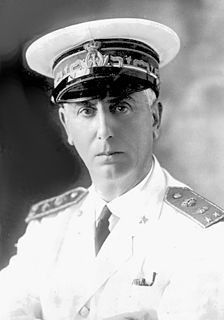 W
WGaetano Arturo Crocco was an Italian scientist and aeronautics pioneer, the founder of the Italian Rocket Society, and went on to become Italy's leading space scientist. He was born in Naples.
 W
WKonrad Dannenberg was a German-American rocket pioneer and member of the German rocket team brought to the United States after World War II.
 W
WMikhail Borisovich Dobriyan was a Soviet and Russian aerospace engineer and a former director of the Space Research Institute of the Russian Academy of Sciences in Tarusa. He was one of the leading figures in the programs of the International Astrophysical Observatory GRANAT and Vega program. Mikhail Dobriyan was a head of Tarussky District and an honorary citizen of the city of Tarusa. There is a street named to honor of Michail B. Dobriyan and a Memorial dedicated to his memory.,,.
 W
WAllen F. Donovan was an American aerospace engineer and systems engineer who was involved in the development of the Atlas and Titan rocket families. He served as a consultant to the President's Science Advisory Committee from 1957 until 1978.
 W
WMajor-General Dr. Walter Robert Dornberger was a German Army artillery officer whose career spanned World War I and World War II. He was a leader of Nazi Germany's V-2 rocket programme and other projects at the Peenemünde Army Research Centre.
 W
WValentin Petrovich Glushko, was a Soviet engineer and designer of rocket engines during the Soviet/American Space Race.
 W
WRobert Hutchings Goddard was an American engineer, professor, physicist, and inventor who is credited with creating and building the world's first liquid-fueled rocket. Goddard successfully launched his rocket on March 16, 1926, ushering in an era of space flight and innovation. He and his team launched 34 rockets between 1926 and 1941, achieving altitudes as high as 2.6 km (1.6 mi) and speeds as fast as 885 km/h (550 mph).
 W
WConrad Haas (1509–1576) was an Austrian or a Transylvanian Saxon military engineer from the Kingdom of Hungary, Transylvania. He was a pioneer of rocket propulsion. His designs include a three-stage rocket and a manned rocket.
 W
WAleksei Mikhailovich Isaev was a Russian rocket engineer.
 W
WHideo Itokawa was a pioneer of Japanese rocketry, popularly known as "Dr. Rocket," and described in the media as the father of Japan's space development.
 W
WOleg Genrikhovich Ivanovsky was a Soviet engineer, and pioneer of spacecraft construction.
 W
WJohann Schmidlap of Schorndorf was a 16th-century Bavarian fireworks maker and rocket pioneer.
 W
WLieutenant-General Kerim Aliyevich Kerimov was a Soviet Azerbaijani engineer, who is regarded as one of the key scientists and founders in the Soviet Union's space program, and for many years a central figure in the Soviet space program. Despite his prominent role, his identity was kept a secret from the public for most of his career. He was one of the lead architects behind the string of Soviet successes that stunned the world from the late 1950s – from the launch of the first satellite, the Sputnik 1 in 1957, and the first human spaceflight, Yuri Gagarin's 108-minute trip around the globe aboard the Vostok 1 in 1961, to the first fully automated space docking, of Cosmos 186 and Cosmos 188 in 1967, and the first space stations, the Salyut series and Mir from 1971 to 1991.
 W
WSergei Pavlovich Korolev was a lead Soviet rocket engineer and spacecraft designer during the Space Race between the United States and the Soviet Union in the 1950s and 1960s. He is regarded by many as the father of practical astronautics. He was involved in the development of the R-7 Rocket, Sputnik 1, and launching Laika and the first human being, Yuri Gagarin, into space.
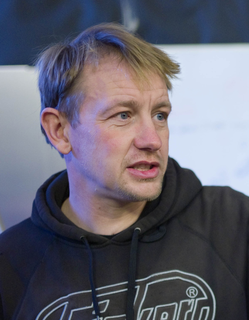 W
WPeter Langkjær Madsen is a Danish convicted murderer, former engineer and entrepreneur. In April 2018 he was convicted of the 2017 murder of Swedish journalist Kim Wall on board his submarine, UC3 Nautilus, and sentenced to life imprisonment.
 W
WFrank Joseph Malina was an American aeronautical engineer and painter, especially known for becoming both a pioneer in the art world and the realm of scientific engineering.
 W
WMary Sherman Morgan was a U.S. rocket fuel scientist credited with the invention of the liquid fuel Hydyne in 1957, which powered the Jupiter-C rocket that boosted the United States' first satellite, Explorer 1.
 W
WJohn Whiteside Parsons was an American rocket engineer, chemist, and Thelemite occultist. Associated with the California Institute of Technology (Caltech), Parsons was one of the principal founders of both the Jet Propulsion Laboratory (JPL) and the Aerojet Engineering Corporation. He invented the first rocket engine to use a castable, composite rocket propellant, and pioneered the advancement of both liquid-fuel and solid-fuel rockets.
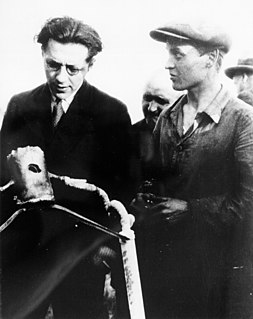 W
WPaul Ehmayr was a German-Austrian rocket engineer. He was a precision mechanic. His masterpiece was a barometer.
 W
WPedro Eleodoro Paulet Mostajo was a Peruvian diplomat who claimed to be the first person to build a liquid-propellant rocket engine and modern rocket propulsion system.
 W
WJesco Hans Heinrich Max Freiherr von Puttkamer was a German-American aerospace engineer, senior manager at NASA, and a pulp science fiction writer.
 W
WQian Xuesen, or Hsue-Shen Tsien, was a Chinese mathematician, cyberneticist, aerospace engineer, and physicist who made significant contributions to the field of aerodynamics and established engineering cybernetics. Recruited from MIT, he joined Theodore von Kármán's group at Caltech. During WWII, he was involved in the Manhattan Project, which ultimately led to the successful development of the first atomic bomb in America. Later on, he would eventually return to China, where he would make important contributions to China's missile and space program.
 W
WTecwyn Roberts was a Welsh spaceflight engineer who in the 1960s played important roles in designing the Mission Control Center at NASA's Johnson Space Center in Houston, Texas and creating NASA's worldwide tracking and communications network.
 W
WMilton William Rosen was a United States Navy engineer and project manager in the US space program between the end of World War II and the early days of the Apollo Program. He led development of the Viking and Vanguard rockets, and was influential in the critical decisions early in NASA's history that led to the definition of the Saturn rockets, which were central to the eventual success of the American Moon landing program. He died of prostate cancer in 2014.
 W
WEugen Sänger was an Austrian aerospace engineer best known for his contributions to lifting body and ramjet technology.
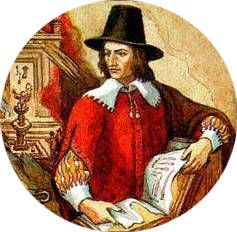 W
WKazimierz Siemienowicz was a general of artillery, gunsmith, military engineer, and one of pioneers of rocketry. Born in the Raseiniai region of the Grand Duchy of Lithuania, he served in the armies of the Polish–Lithuanian Commonwealth and of Frederick Henry, Prince of Orange, a ruler of the Netherlands. No portrait or detailed biography of him has survived and much of his life is a subject of dispute.
 W
WColonel Leslie Alfred Skinner LOM was an American rocket engineer. He played a leading role in the development of several rocket propelled weapons during World War II, notably the first shoulder-fired missile system, the bazooka.
 W
WRichard G. Smith was director of NASA's John F. Kennedy Space Center from September 26, 1979 to August 2, 1986. Born in Durham, N.C., in 1929, Smith was educated in Alabama schools. After graduation from Decatur High School, he attended Florence State College and Auburn University. He received a bachelor's degree in electrical engineering from Auburn in 1951.
 W
WStephen Hector Taylor-Smith often known as Stephen Smith, was a pioneering Indian aerospace engineer who developed techniques in delivering mail by rocket.
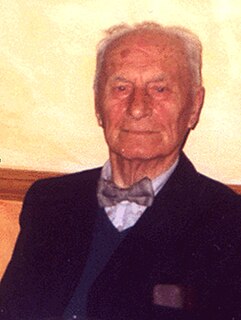 W
WGrigori Aleksandrovich Tokaev also known as Grigory Tokaty; was a rocket scientist and long-standing critic of Stalin's USSR.
 W
WCaptain Robert C. Truax (USN) was an American rocket engineer in the United States Navy, and companies such as Aerojet and Truax Engineering, which he founded. Truax was a proponent of low-cost rocket engine and vehicle designs.
 W
WKonstantin Eduardovich Tsiolkovsky was a Russian and Soviet rocket scientist and pioneer of the astronautic theory. Along with the French Robert Esnault-Pelterie, the Transylvanian German Hermann Oberth and the American Robert H. Goddard, he is considered to be one of the founding fathers of modern rocketry and astronautics. His works later inspired leading Soviet rocket engineers such as Sergei Korolev and Valentin Glushko and contributed to the success of the Soviet space program. Tsiolkovsky spent most of his life in a log house on the outskirts of Kaluga, about 200 km (120 mi) southwest of Moscow. A recluse by nature, his unusual habits made him seem bizarre to his fellow townsfolk.
 W
WAir Commodore Władysław Józef Marian Turowicz, usually referred to as W. J. M. Turowicz, was a Polish-Pakistani aviator, military scientist and aeronautical engineer.
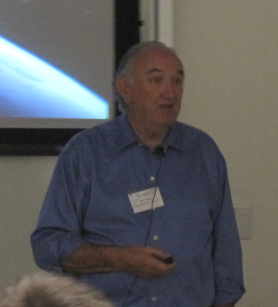 W
WRobert J. "Bob" Twiggs is a Professor of Astronautics and Space Science at Morehead State University. He is responsible, along with Jordi Puig-Suari of California Polytechnic State University, for co-inventing the CubeSat reference design for miniaturized satellites which became an Industry Standard for design and deployment of the satellites.
 W
WMikhail Kuzmich Yangel, was a Soviet engineer and the leading missile designer in the Soviet Union.
 W
WGeorg Arthur Constantin Friedrich Zander, was a Baltic German pioneer of rocketry and spaceflight in the Russian Empire and the Soviet Union. He designed the first liquid-fueled rocket to be launched in the Soviet Union, GIRD-X, and made many important theoretical contributions to the road to space.
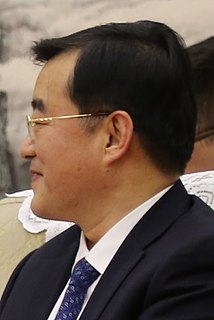 W
WZhang Qingwei is a Chinese politician, business executive, and aerospace engineer. He is the Communist Party Secretary of Heilongjiang, former Governor of Hebei, and former chairman of the Commission for Science, Technology and Industry for National Defense (COSTIND). Prior to his government career he was president of China Aerospace Science and Technology Corporation (CASC) and chairman of Comac, an aerospace manufacturer.
 W
WAleksandr Borisovich Zheleznyakov is a specialist in design and production of rocket and space systems. He is also a writer and journalist.